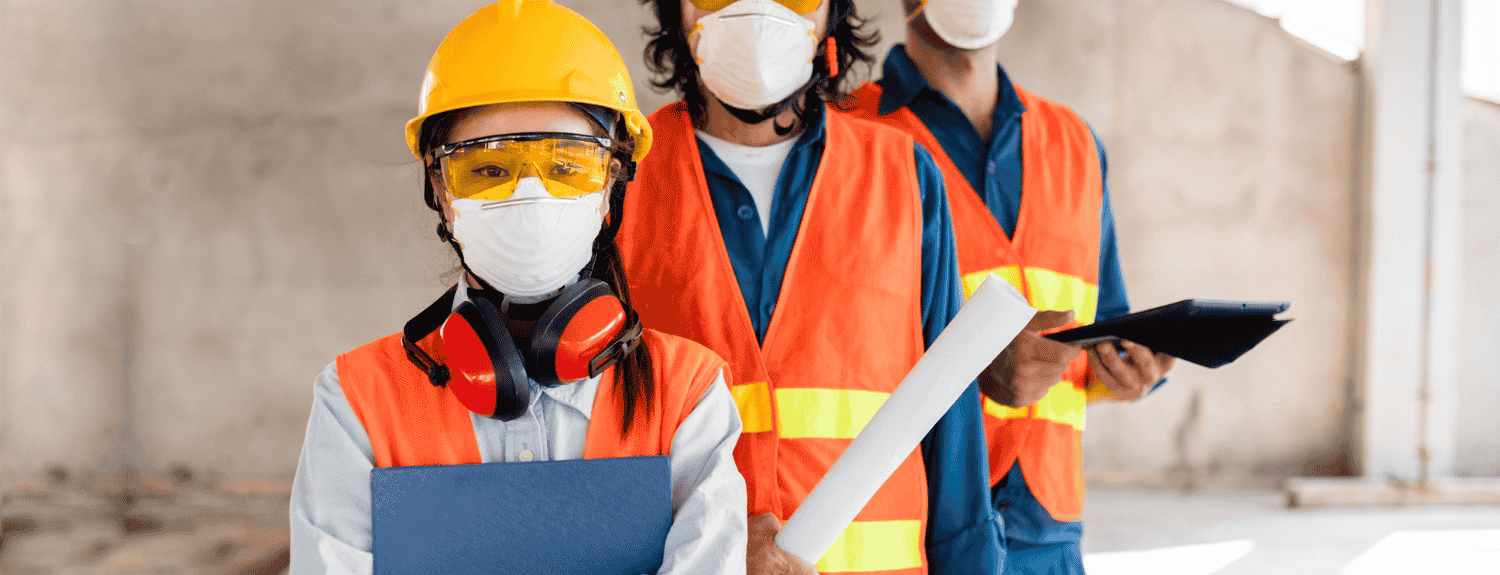Top 10 Health and Safety Risks on UK Construction Sites (And How to Avoid Them)
Construction in the UK is still a risky business. In fact, even with better gear, tighter rules, and more training, things still go wrong. The Health and Safety Executive (HSE) says the UK is up there (top tier) for workplace deaths and serious injuries.
Although it sounds grim, it feels the industry might have figured out a solution by now. However, most of these risks are totally avoidable. Also, they are even predictable. But why do they keep happening?
Employers, contractors, and workers always have to stay sharp. This guide contains the top 10 health and safety threats and real steps, because no one should get hurt just for doing their job.
10 Health and Safety Risks of UK Construction Sites
The following are some of the major health and safety risks of UK construction sites:
1. Working at Height
The biggest killer in UK construction is falls. In fact, there are still roofs, scaffolds, and ladders that have edges with no guardrails. Hence, it is a recipe for disaster. You might think we would learn.
How to avoid those risks?
- Risk assessments are necessary every time.
- Work with guardrails, edge protection, and proper scaffolding.
- If it is impossible to prevent a fall, at least catch it with harnesses and lanyards.
- Train people to work with ladders properly.
- Supervise and double-check gear. Also, make sure no one is dangling off a roof with a substandard kit.
2. Slips, Trips, and Falls on the Same Level
Mud, cables, junk, and uneven patches are everywhere. Hence, if you take one wrong step, you might end up with a broken wrist, head trauma, and back pain that never quits.
How to avoid those risks?
- Make sure to keep walkways clear and lit up.
- Signs help too with wet floor and uneven surfaces.
- Choose “Tidy as you go” for good housekeeping practices and don’t wait for things to be perfect.
- Make sure to tuck cables away. Moreover, keep anti-slip mats everywhere.
- Footwear matters—grip soles, always. Seems basic. But people skip stuff. Rushing, cutting corners. Then someone ends up in A&E. Worth it? Nope.
3. Moving Vehicles and Plant
It is hard to build without forklifts, dumpers, and cranes. However, they are heavy, fast, and unforgiving. If you make one wrong move, someone gets crushed. Moreover, there are issues with visibility, along with tight spaces, noise, and chaos. Also, it is not easy to spot a worker even in a high-visibility vest through dust and glare.
How to avoid those risks?
- Make sure to separate vehicles and people’s routes.
- Employ barriers, banksmen (for spotting), and traffic plans.
- Vehicles require regular checks. Hence, no skipping maintenance.
- Train operators the right way and give them licence checks too.
- Make sure your workers get high-visibility PPE gear.
4. Falling Objects
Many objects drop like tools, bricks, and even a bolt. Hence, it can be even life-threatening for many workers. Especially when the object is falling from a height, it’s brutal.
How to avoid those risks?
- Make sure to install toe boards, nets, and exclusion zones.
- Strap tools with Lanyards to save lives.
- Store materials properly and keep them away from the edges.
- Always ensure all the workers are wearing hard hats.
5. Asbestos Exposure
Asbestos is still lurking in the UK despite being banned since ’99. In general, old buildings are full of it. You disturb it, and fibres go airborne. These might cause fatal lung disease.
How to avoid those risks?
- A survey of asbestos is important before work starts.
- Work with licensed professionals to remove asbestos.
- Ensure everyone gets PPE and RPE.
- Train workers to spot asbestos. If they suspect, stop work immediately.
6. Electrical Hazards
Injuries mostly happen after contact with a live wire. Apart from that, risks include overhead lines, buried cables, and temporary site setups.
How to avoid those risks?
- Map and identify underground and overhead services beforehand.
- To de-energise systems, utilise lock-off procedures.
- Make sure to inspect the site’s electrics every time.
- Work with trained workers for safe electrical practices.
- Work with qualified electricians to handle installations and repairs.
7. Manual Handling & MSDs
Back pains and strains are common when workers lift heavy loads in the wrong way. It builds up to cause long-term musculoskeletal disorders (MSDs).
How to avoid those risks?
- Train people in lifting techniques.
- Use hoists and trolleys—whatever helps.
- Mix up tasks and rotate them among workers.
- When it comes to heavy lifting, engage the team.
- Always assess the risk first before manual handling.
8. Noise & Vibration
Loud machinery damages hearing if they are prolonged. Meanwhile, vibrating tools lead to HAVS (hand-arm vibration syndrome). This is serious and permanent.
How to avoid those risks?
- Measure exposure to noise regularly.
- Hand out ear defenders and plugs.
- Work with quieter and low-vibration kits.
- Rotate shifts to limit exposure.
- Keep machines in shape for less rattling and less damage.
9. Chemical & Hazardous Substances
Cement burns, paint fumes, and dust in your lungs cause respiratory issues. COSHH (Control of Substances Hazardous to Health) Regulations exist for a reason. These ensure managers must assess risks.
How to avoid those risks?
- Assess everything as per COSHH rules. Label it and store it correctly.
- Make PPE and RPE mandatory.
- Train on handling and what to do if things go wrong.
- Ventilation and dust control matter a lot.
10. Mental Health & Stress
Long hours lead to pressure for construction workers. Also, there is no job security, and they wear people down. Suicide rates are way too high in the industry (especially in the UK). Also, mental health has become a critical health and safety issue.
How to avoid those risks?
- Talk about mental health and make space for it.
- Provide access to support services and EAPs.
- Train managers to spot burnout.
- Encourage a culture of care since it saves lives.
- Ensure workloads are realistic. Also, make sure workers take adequate breaks.
Training & Competence: Why Are They Important?
All roads lead to competence. In fact, it doesn’t matter how good the gear is. If workers don’t know how to utilise it, it is practically useless. Moreover, the law (Health and Safety at Work Act) says employers must always train and supervise.
Meanwhile, certification schemes like Veriforce CHAS help with contractor competence. These certificates keep standards tight and reduce risk. Furthermore, it helps businesses verify contractors for reduced risks.
Future Trends in Construction Health and Safety
The following are some of the major trends that will be visible in the future:
- Digital risk management. BIM and digital twins improve hazard identification.
- Rise of wearable technology. Smart PPE that monitors fatigue, noise, and exposure.
- More mental health support. Integrating wellbeing into safety strategies.
- Stricter regulations. Ongoing changes as per the Building Safety Act and related legislation.
Hence, if you stay ahead of these trends, you will be able to ensure a safer and more resilient worksite.
Bottom Line
In general, construction sites are risky. But it doesn’t have to be deadly. Hence, by knowing these risks, you will know how to control them. From falling bricks to burnout, every hazard is manageable.
This is because safety is not just about rules. It is also a culture – one where everyone gets home safe. Therefore, focus on the right systems, training, and partnerships.
Read Also:



